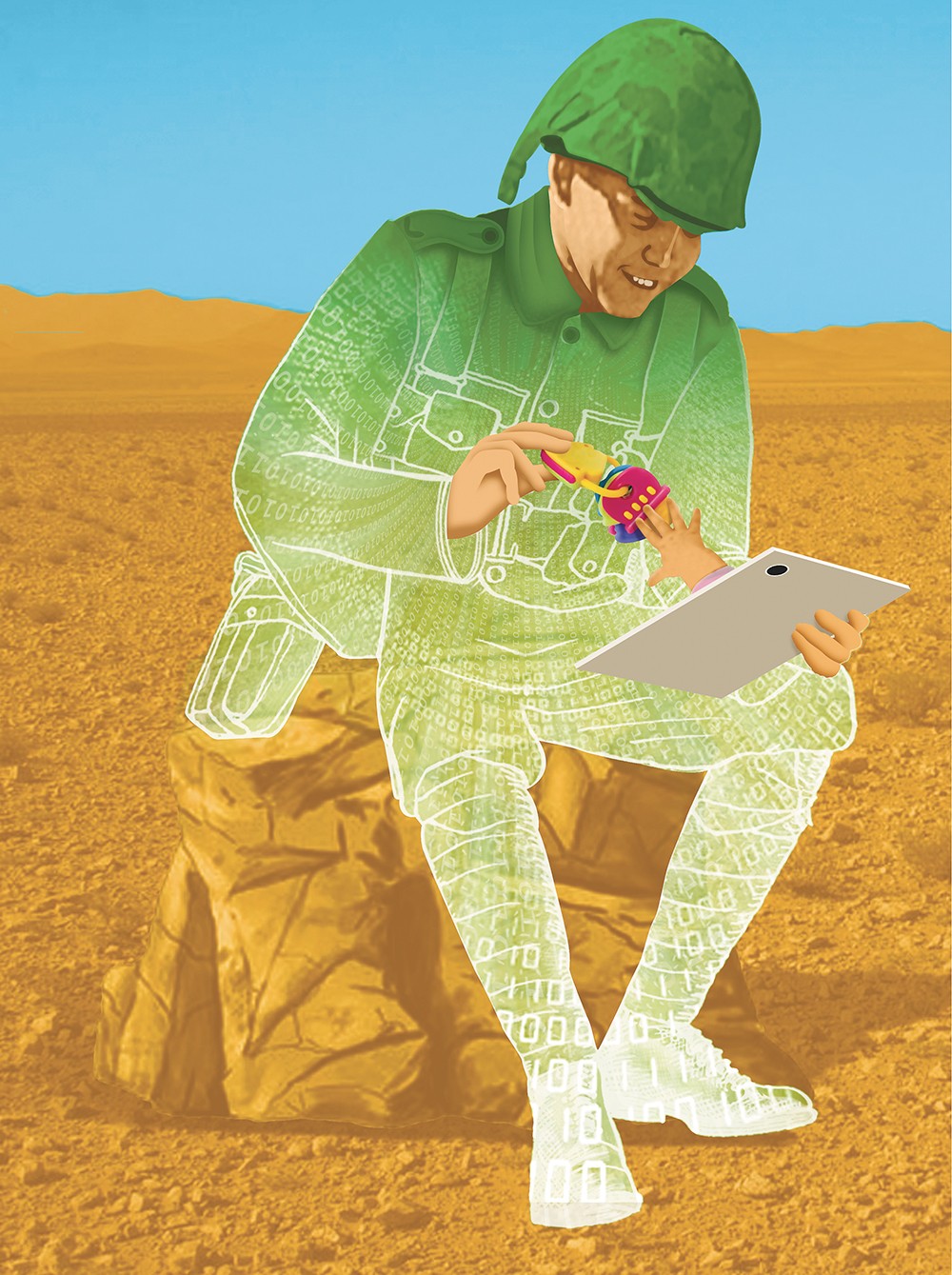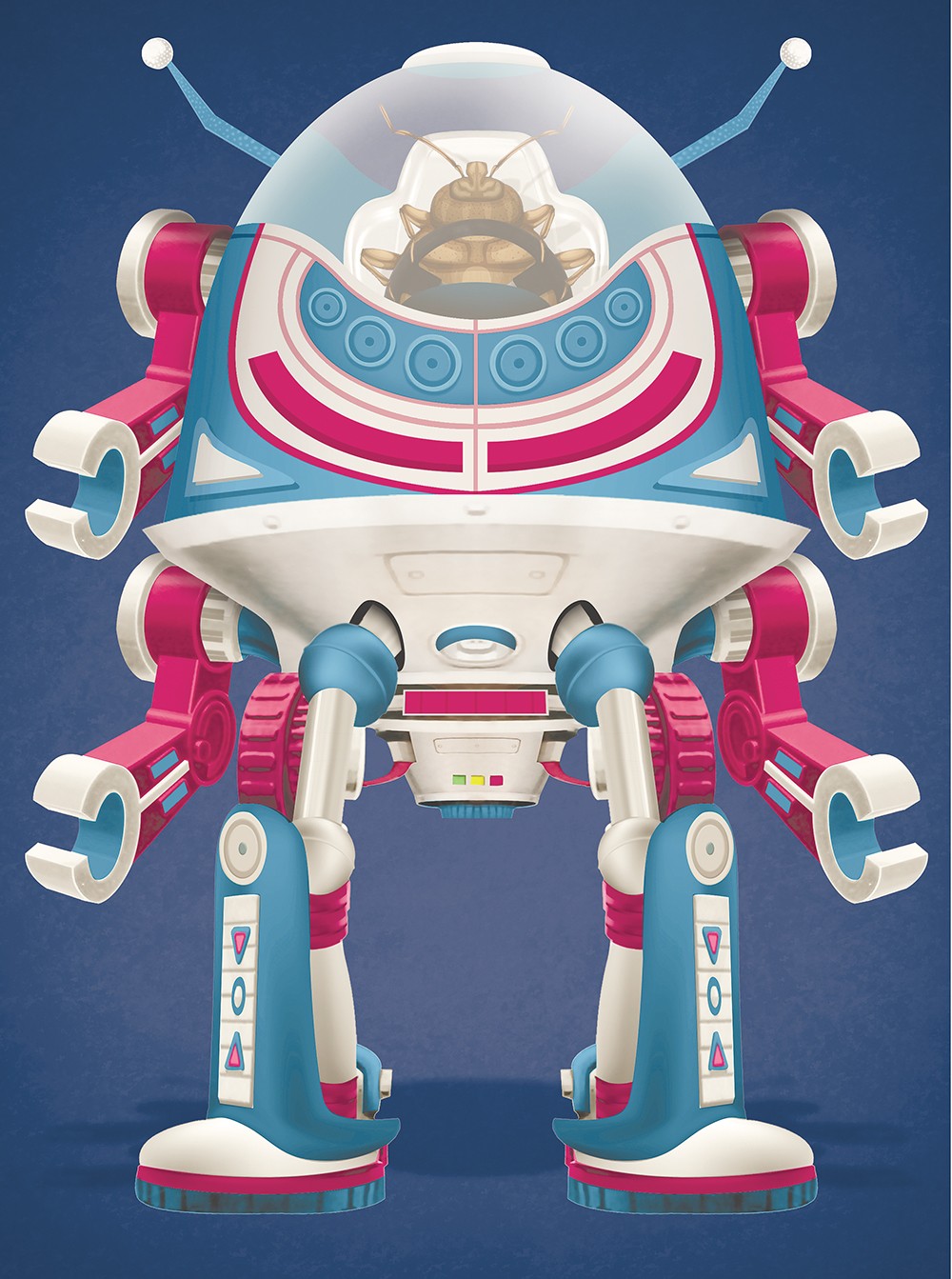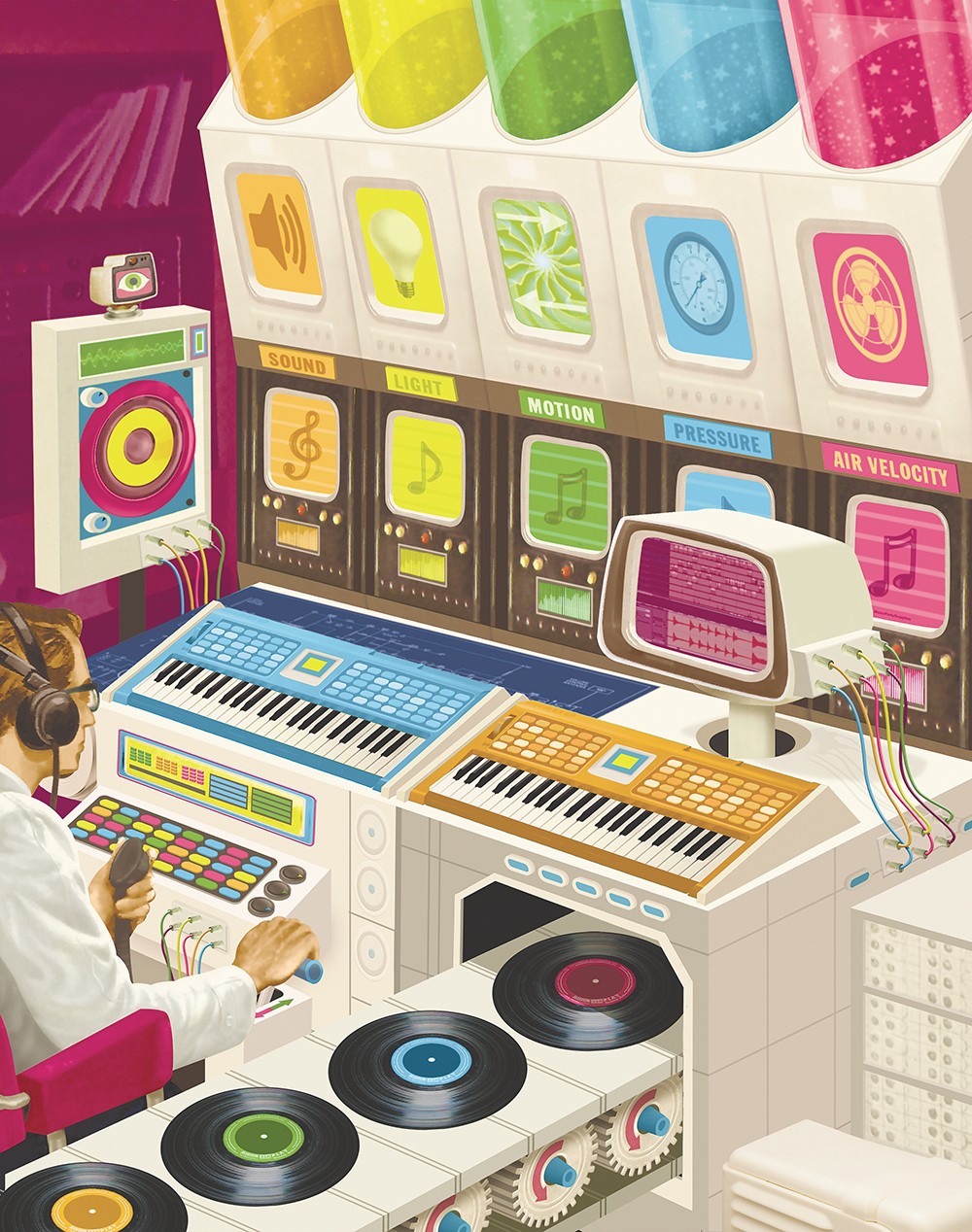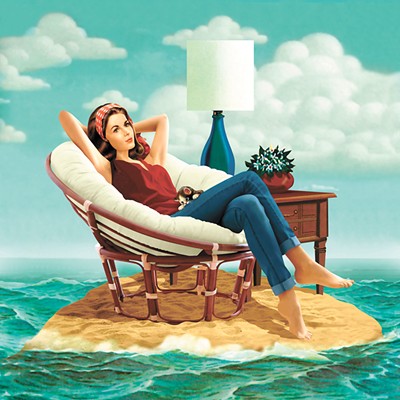GONZAGA UNIVERSITY
Connected in Combat
Why a Gonzaga assistant professor says social media has changed everyday life for soldiers
As Lisa Silvestri started researching how American troops use social media, it didn't take long before she realized that like almost everyone else, they enjoyed using Facebook.
She talked to one soldier, a driver of armed trucks for the Marine Corps in Afghanistan, who was excited because he thought social media would let him talk to his family and friends and make him feel a little less homesick.
But that soldier soon got tired of social media. He wanted to focus on where he was at the moment — a war zone — so he could get back home safely. He started using Facebook less, but that caused his family and friends to wonder why he was ignoring them. His girlfriend of three years broke up with him. In Afghanistan, he had to worry about problems back home. He felt like he had "one foot over there and one foot here."
Silvestri, in her 2015 book Friended at the Front: Social Media in the American War Zone, writes that this kind of experience is not unique for modern-day troops. Currently an assistant professor in the communication studies department at Gonzaga University, Silvestri spent years interviewing troops fresh from deployment, starting in 2010. What she found is that soldiers use social media similar to the way it's used at home, but that can have a different impact in the context of a war zone. Because of social media, she says, the bounds between war and everyday life are blurring, marking "a revolutionary change in how we once imagined combat deployment."
"I thought [soldiers] being connected would be a good thing," Silvestri says. "But it's not. It produces the same headaches that I think a lot of us have here. Only it's more exacerbated. ... Not only are they in physical danger, but ideologically they are removed from our concerns and what we're interested in."
WASHINGTON STATE UNIVERSITY
Super Bugs
Bedbugs are back, and this time they're nearly invincible in the face of modern pesticides
By Daniel Walters
We thought we'd beaten bedbugs. After World War II, they had been almost eliminated thanks to the powerful pesticide DDT. But in the past three decades, bedbugs have started to return, resistant to the chemicals that reliably killed almost all of them a half-century ago.
For the past nine years, Rose Zhu, an entomology professor at WSU, has been trying to figure out exactly which traits allow bedbugs to shrug off what once killed them.
Using insect forceps — essentially, soft tweezers — she snatches up the bedbugs, placing them in a vial that lets in just enough air for them to breathe, and takes them back to her lab. She keeps them alive, feeds them rabbit blood and studies them. And she's not the only one.
Zhu has joined with 80 other scientists over four years — essentially all the renowned bedbug experts in the world — to figure out why bedbug populations that once curled up and died when sprayed have become immune. What this consortium discovered highlighted just how vast the problem was: It wasn't that bedbugs had evolved with a specific genotype that allowed them to resist toxic chemicals. It was that they had a bevy of different genotypes that allowed them to resist toxic chemicals.
"They have a whole battery of ways to be resistant to insecticide," says Laura Lavine, a WSU entomology professor who works with Zhu.
In other words, bedbugs don't have just a single weapon to defend against pesticides, but an arsenal.
So how did this happen? Lavine says the problem came down to how bedbugs have been battled for decades. When farmers spray their crops, they rotate through a whole range of different types of pesticides to insure that, even if some insects are immune to one or two of the chemicals, they'll be killed by the others.
"Imagine you're subjected to a chemical that's killing off 99 percent of the population, and you're the 1 percent of the population that survives," Lavine says. "You are now carrying the genetic material that is keeping you alive in the face of the chemical."
These insects reproduce very, very quickly. So throughout the country, isolated populations of bedbugs, with different pesticide-resistant genotypes, have separately developed different pesticide-resistant genotypes.
EASTERN WASHINGTON UNIVERSITY
For the Birds
Why a small fish could mean big problems for waterfowlat the Turnbull National Wildlife Refuge
By Jake Thomas
The fish look harmless enough. Their tapered, grayish bodies are no bigger than a pinky finger.
No one's quite sure how the brook stickleback, a fish native to the Midwest, got into the wetlands at Turnbull National Wildlife Refuge, according to Joanna Joyner-Matos, an associate professor of biology at Eastern Washington University, but she says she has enough evidence that they're damaging its ecological system. Now, she says, it's a matter of finding out how bad the damage is and whether it's reached populations of ducks and other migratory fowl, which rely on the wetlands and have already seen their numbers decline.
In 2015, Joyner-Matos, along with two of her biology students and some high school students, conducted research at the refuge seeking to answer a simple question: Are there fewer bugs in lakes that have the stickleback compared to those that don't? The answer, says Joyner-Matos, is yes, and a paper based on the conclusions will be published in the academic journal Northwest Science.
"The water bodies that have stickleback are decreasing in quality," she says. The stickleback prey on mayfly and dragonfly larvae, as well as worms and aquatic arthropods, small shrimp-like creatures. In some lakes, she says, "They're just almost gone. ... We are talking just complete desecration."
The prickly spines that line the fish's backs deter snakes and birds from preying on them, she says, adding that diving beetles, a species with large, strong mandibles, are the only thing that will eat the fish. Stickleback are present in two-thirds of the refuge, and are starting to spread downstream, according to Joyner-Matos.
A study published in the academic journal Science in 2015 found that just 9 percent of 1,451 migratory birds have enough protected areas. Turnbull is the last high-quality breeding habitat for fowl in Eastern Washington, and Joyner-Matos says the fish could change that.
Baby ducklings and other birds, says Joyner-Matos, prey on the small insects and could be left with nothing to eat after the fish have eaten them all. Joyner-Matos says it'll take years of data to get the non-native fish labeled as invasive, which will bring federal and state resources to eradicate them.
"It's really hard to prove some of those causations without a long period of time," says Christi Norman, program director for Audubon Washington, who notes that the refuge is a particularly large one that brings in out-of-town birdwatchers who pump money into the local economy. "But it doesn't mean it's not happening."
UNIVERSITY OF IDAHO
Lab of the Rings
Data from NASA's Cassini mission to Saturn has revealed new details about the gas giant's most massive ring — it's not as massive as previously thought
By Mitch Ryals
During certain times of the year, Saturn is visible from Earth. At about 888 million miles from the surface of the sun, it's the last planet in the solar system still visible with the naked eye. What you can't see without a telescope, however, are its mysterious bands — the rings.
All of the gas giants have rings of some kind, but Saturn's are by far the most distinctive. Information about the rings — why they exist, how long they've existed, and what they're made of — can give us not only a better understanding of the elements at play within the planet, but also provide valuable information about the development of the solar system as a whole.
Earlier this year, a report using data from NASA's Cassini mission to Saturn provided new conclusions about one specific section of Saturn's ring system, known as the B-ring.
"It says that somehow this ring is very opaque, but not very massive, so it has to be made out of these very fluffy particles," says University of Idaho professor Matthew Hedman, the report's lead author. "And we're still struggling to understand what that means."
New data from the Cassini mission allowed Hedman and others to determine the weight of certain sections of the B-ring, using waves within the ring. The results were surprising: It turns out that the B-ring, the most massive of the rings, is lighter than scientists originally thought, meaning it's also much younger. Typically, as time goes on, comets and other darker objects will crash into the rings, dimming their brightness.
"One of the big questions is, 'How old are the rings? Are they as old as Saturn? Or are they something that formed recently in geologic times?'" Hedman says.
Hedman explains why scientists are looking at this: The rings are a disc of material in orbit around a central point. And our solar system was formed from a disc in orbit around a central point. Although Saturn's disc is very different from the one that formed our solar system, it can provide insight into that phenomenon.
"In general, we think of this as a place to test our ideas about how our solar system was formed," Hedman says.
WHITWORTH UNIVERSITY
The Music of Science
Using Arduino technology, one professor has expanded music into a new realm of possibilities
By Laura Johnson
Brent Edstrom is a jazzman. His mind was never satisfied with the confines of classical piano, his chosen instrument. But within jazz music's infinite improvisation, there was pure freedom. These days, the Whitworth University jazz studies professor has taken musical interpretation to greater heights, crafting devices that are sensitive to light, breath and touch.
Earlier this year, in his cushy North Spokane basement, his eyes brighten while talking about the process of making his own sci-fi-looking microcontrollers. Introduced to Arduino (pronounced "ardweeno") technology about four years ago, the Whitworth music theory/composition coordinator saw potential to take his music to new heights. He was soon hooked, tinkering away on the palm-sized circuit boards at all hours. He says that his family, friends and colleagues, while supportive, haven't all exactly understood his new passion. This is a labor of love.
The simple hardware materials cost about $20; it was the knowledge to build and work on the open-source prototyping platform that took time — especially applying it to music, a somewhat unexplored frontier. A computer programmer since the 1990s, Edstrom says it was still a complicated medium to learn and understand. Arduino technology, which has existed for about a decade, is often used for mathematical and robotic projects. When Edstrom started with it, there was not one blog or website devoted to the process of applying this to the standard MIDI (Musical Instrument Digital Interface) or other computer technologies.
"A lot of my life right now is a result of my search for better information on this topic," Edstrom says.
So much so that he wrote the book on the subject.
At 456 pages, Edstrom's hefty April release, Arduino for Musicians, could probably crack a few skulls. But the length is necessary. Edstrom understands that many of the terms used in his tome seem foreign to those taking the leap into the technological side of crafting music, and he purposely wrote it as a how-to manual. He gives readers the building blocks, then teaches them how to construct the controllers.
So far the 51-year-old has created a custom XY touchscreen controller, MIDI hand drum, and breath/joystick controller, all of which can manipulate sound in ways acoustic instruments can't to create distinctive pitches, keys and tones.
"A computer can be an instrument," he says. "I've heard artful music in every genre. I don't know that I see a huge difference between using a keyboard or another interface. A nontraditional way of creating sound, that can certainly come from music."























